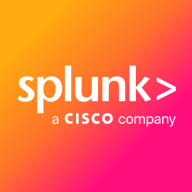

InfluxDB and Splunk Observability Cloud are key players in the data monitoring and analytics space. While InfluxDB stands out with favorable pricing and strong support, Splunk Observability Cloud is often chosen for its robust features and higher perceived value.
Features: InfluxDB offers integration with systems, real-time data processing, and a lightweight time-series database, whereas Splunk Observability Cloud provides comprehensive data analytics capabilities, advanced analysis tools, and extensive integrations.
Room for Improvement: InfluxDB could enhance its advanced analytics capabilities, expand integration options and improve user experience. Splunk Observability Cloud could work on simplifying deployment, reducing resource consumption, and enhancing initial user accessibility.
Ease of Deployment and Customer Service: InfluxDB is known for its straightforward deployment process and reliable customer service. Splunk Observability Cloud, despite its complex deployment, offers thorough and responsive customer service, which can be beneficial for larger setups.
Pricing and ROI: InfluxDB presents a cost-effective option with a strong return on investment for budget-conscious companies. In contrast, Splunk Observability Cloud requires a higher upfront investment but offers substantial long-term value from its advanced features and analytics depth.
| Product | Market Share (%) |
|---|---|
| Splunk Observability Cloud | 1.2% |
| InfluxDB | 0.4% |
| Other | 98.4% |


| Company Size | Count |
|---|---|
| Small Business | 4 |
| Midsize Enterprise | 3 |
| Large Enterprise | 6 |
| Company Size | Count |
|---|---|
| Small Business | 20 |
| Midsize Enterprise | 10 |
| Large Enterprise | 43 |
InfluxDB is open-source software that helps developers and enterprises alike to collect, store, process, and visualize time series data and to build next-generation applications. InfluxDB provides monitoring and insight on IoT, application, system, container, and infrastructure quickly and easily without complexities or compromises in scale, speed, or productivity.
InfluxDB has become a popular insight system for unified metrics and events enabling the most demanding SLAs. InfluxDB is used in just about every type of industry across a wide range of use cases, including network monitoring, IoT monitoring, industrial IoT, and infrastructure and application monitoring.
InfluxDB offers its users:
InfluxDB Benefits
There are several benefits to using InfluxDB . Some of the biggest advantages the solution offers include:
Reviews from Real Users
InfluxDB stands out among its competitors for a number of reasons. Two major ones are its flexible integration options and its data aggregation feature.
Shalauddin Ahamad S., a software engineer at a tech services company, notes, “The most valuable features are aggregating the data and the integration with Grafana for monitoring.”
Splunk Observability Cloud offers sophisticated log searching, data integration, and customizable dashboards. With rapid deployment and ease of use, this cloud service enhances monitoring capabilities across IT infrastructures for comprehensive end-to-end visibility.
Focused on enhancing performance management and security, Splunk Observability Cloud supports environments through its data visualization and analysis tools. Users appreciate its robust application performance monitoring and troubleshooting insights. However, improvements in integrations, interface customization, scalability, and automation are needed. Users find value in its capabilities for infrastructure and network monitoring, as well as log analytics, albeit cost considerations and better documentation are desired. Enhancements in real-time monitoring and network protection are also noted as areas for development.
What are the key features?In industries, Splunk Observability Cloud is implemented for security management by analyzing logs from detection systems, offering real-time alerts and troubleshooting for cloud-native applications. It is leveraged for machine data analysis, improving infrastructure visibility and supporting network and application performance management efforts.
We monitor all Network Monitoring Software reviews to prevent fraudulent reviews and keep review quality high. We do not post reviews by company employees or direct competitors. We validate each review for authenticity via cross-reference with LinkedIn, and personal follow-up with the reviewer when necessary.